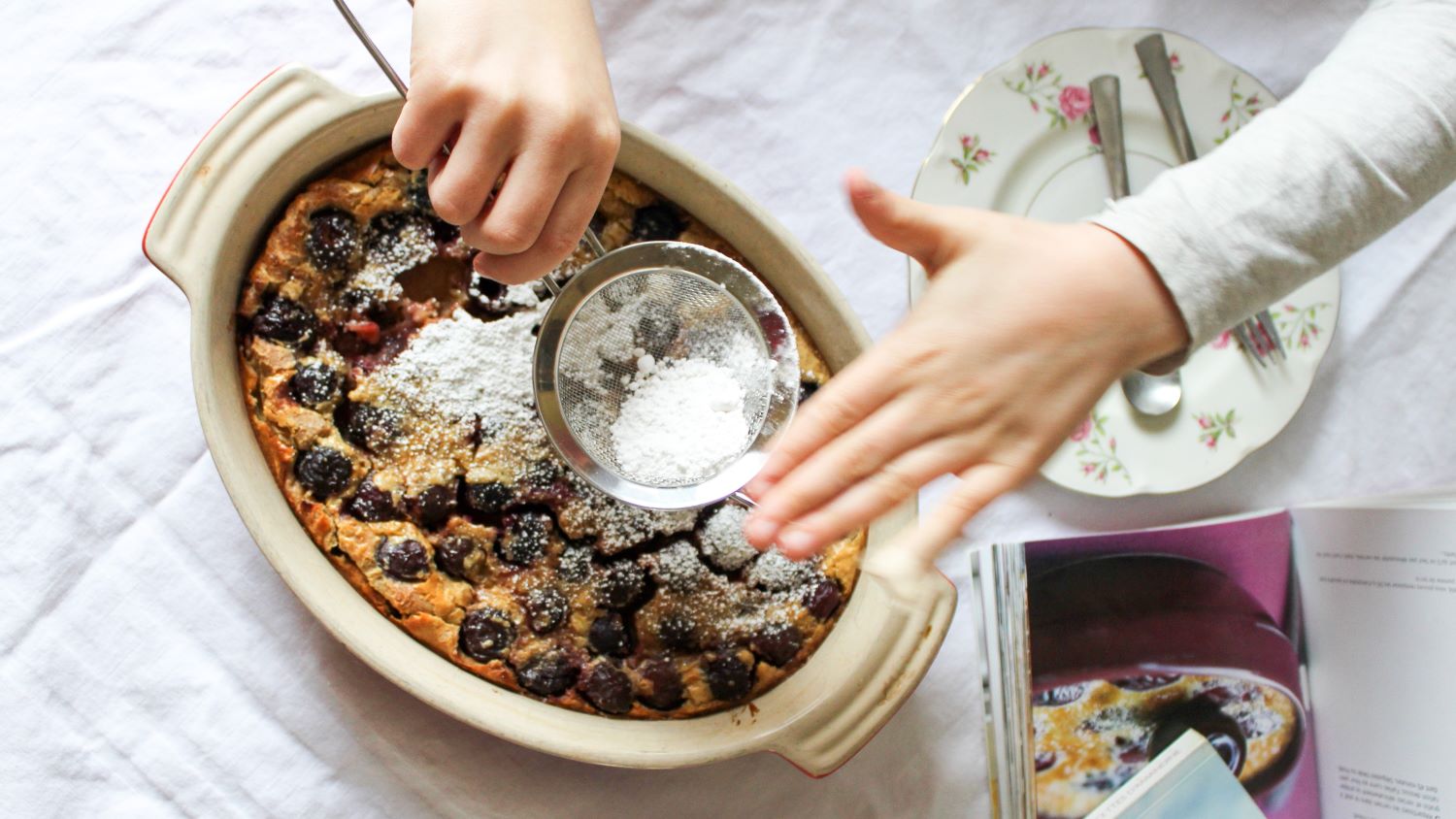Making Summer Memories: Cherry Clafoutis
Cherry clafoutis (pronounced kla-FOO-tee) is the easiest dessert you’ll make this summer. The batter, a simple mixture of flour, sugar, milk, and eggs, is poured over cherries, then baked until golden and puffy — think of it as a thick Dutch baby. Over the years, I’ve often shared my mom’s recipe, which leads to a fruit-studded cake with a firm, flan-like texture. It is delicious.
If I’ve done my job right, you may already be tempted to skip straight to the recipe. After all, you probably have all the ingredients on hand, save for the cherries, which you’ll get tomorrow anyway. A recipe, however, is more than an ingredient list and a series of steps to follow. Sometimes, the humblest dishes carry the richest history and traditions and, to understand clafoutis, you need to know its roots.
Born in the 19th century in the center of France, the dessert was first made with tiny, unpitted sweet cherries. From the Limousin region, the recipe spread to the rest of the country, where clafoutis is now made with large, dark cherries.
In the suburbs of Paris, where I grew up, you won’t find this dish on a restaurant menu; instead, it’s the kind of cake French people whip up on a Sunday afternoon to serve for the goûter — aka the four o’clock snack. Even today, many a home baker will forgo the pitting for the sake of tradition. Some say it will help keep the batter firm, while others swear the pits lend their subtle almond flavor to the dish. What I do know, is that pits make eating clafoutis a lot more fun.
When I was a teenager, cherry clafoutis marked the unofficial start of summer. Every June, my mom would whip up batch after batch of the dessert using the backyard tree’s bountiful crop. She’d tried several recipes before stumbling upon her favorite in the most unlikely place — a grocery store flyer. The proportions led to a mildly sweet batter that was firm, but not too dense, with plenty of fruit in each bite. There were rarely leftovers the next day.
On a rainy Sunday, my family would dig into our slices in the living room but, if the sun shone, we’d devour our slices on the patio, in front of the cherry tree. My sister and I would let the warm cake melt in our mouths, savor the jammy cherries, then spit the red-stained pits as far as we could back in the yard. We’d keep giggling afterward.
When I first moved to the US, I looked for clafoutis recipes on several American food websites. Some called for heavy cream, while others called for almond meal. None instructed to keep the cherries whole. Now, I won’t lie, the luxurious ingredients resulted in a delectable, fancy delicacy. To me, however, it felt like moving a farm girl to the city — she may have a good time during the day, but she misses home every night.
Eventually, I asked my mom for her recipe.
Now a mother myself, I bake new memories for my family. Every summer, we bake clafoutis with either farmers’ market cherries or with fruit I forage outside a local grocery store parking lot. When my kids were little, I pitted the cherries for the sake of safety. These days, the cherries are baked whole. When it’s nice outside, we go on the deck and spit our pits as far as we can. I hope you’ll do the same.









